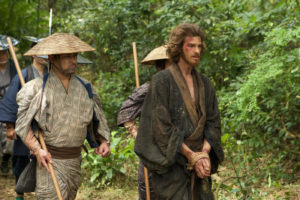Starring: Adam Sandler, Kevin Garnett and Idina Menzel
Directed by: Josh and Benny Safdie
Rated: R
Running Time: 135 minutes
A24
Just like “The Meyerowitz Stories” and “Punch-Drunk Love” before it, “Uncut Gems” will certainly fire up the debate about whether or not Adam Sandler is a good actor. I believe he’s good, if given a precise role that caters to his natural man-child characters we’ve seen in his comedies, as well as a film that allows him to let his unchecked rage loose. However, “Uncut Gems” does more than reignite that debate, it gives us what is undoubtedly Sandler’s best performance.
Sandler isn’t a traditional man-child in “Uncut Gems.” He plays somewhat successful New York City jewelry store owner, Howard Ratner. He not only sells jewelry worth tens of thousands of dollars, but has NBA superstars like Kevin Garnett coming into his store. He appears to make enough money to sustain a double life. He spends half his life at a suburban mansion with his wife and kids, and the other half at a downtown apartment with his young, attractive girlfriend who also works at his jewelry store. Undercutting his entire life though, is a crippling and dangerous addiction.
It doesn’t take audiences long to recognize that Howard’s metaphorical “chasing the dragon” is sports betting. Throughout his day he pawns items, gets chased down by criminals and thugs he owes money to, and places ridiculous parlay bets so that his payout is astronomical. Howard never backs down from a threat. He puffs his chest, talks a big game, and demands respect. But we’re shown throughout the movie that he’s not a strong man. He can barely raise a fist in a fight, cowers at a strong enough threat, is far from being physically fit, and doesn’t even own a single firearm. Howard’s a proverbial powder keg.
Just like in “Good Time,” the writers and directors of “Uncut Gems,” the Safdie Brothers, have crafted an anxiety-inducing criminal journey. The path they create for their characters is a master class in suspense and dread, but we’re never concerned about the leads. Howard is a scumbag, through and through. He’s not someone to root for, and if anything, we’re hoping that he has an ill-fitting end. It’s everyone around him we’re concerned about. He has a brother, who’s with the mobsters that are demanding money from him, who only shows concern when the criminals stuff Howard in a trunk naked. Howard has a family at home that’s oblivious to the vultures circling above. He has a girlfriend, who while naive, doesn’t deserve the danger that Howard attracts. It all makes for some riveting scenes, where guns are never shown, but the threats and words exchanged foreshadow an exciting third act.
Just like Martin Scorsese, who serves as an executive producer on this film, the Safdie Brothers love chaotic scumbags. It’s not that they’re smart or cunning. They use what little power and money they have to push everyone around them to their limits. For fans of crime thrillers, “Uncut Gems” is a must-see. For Sandler fans, you’ve never seen him like this.




